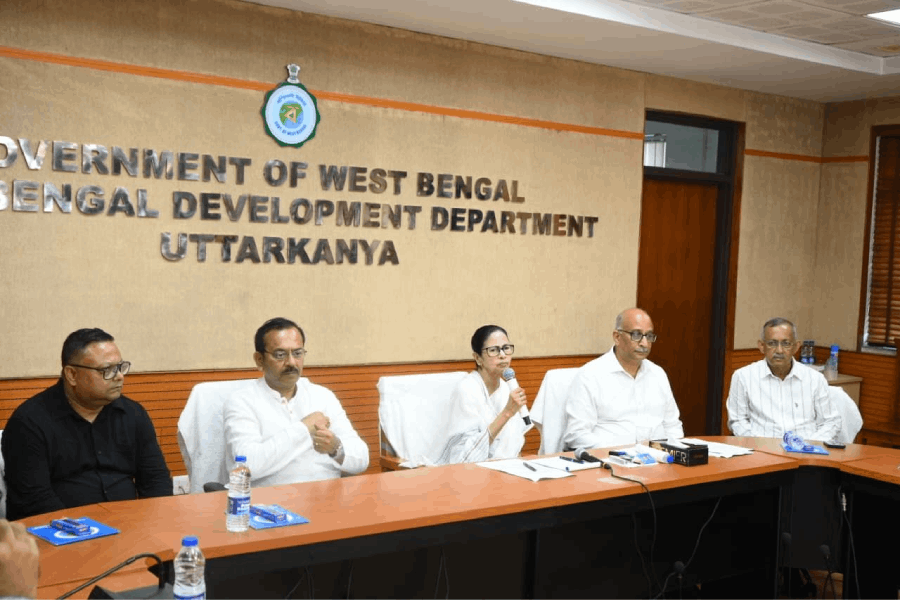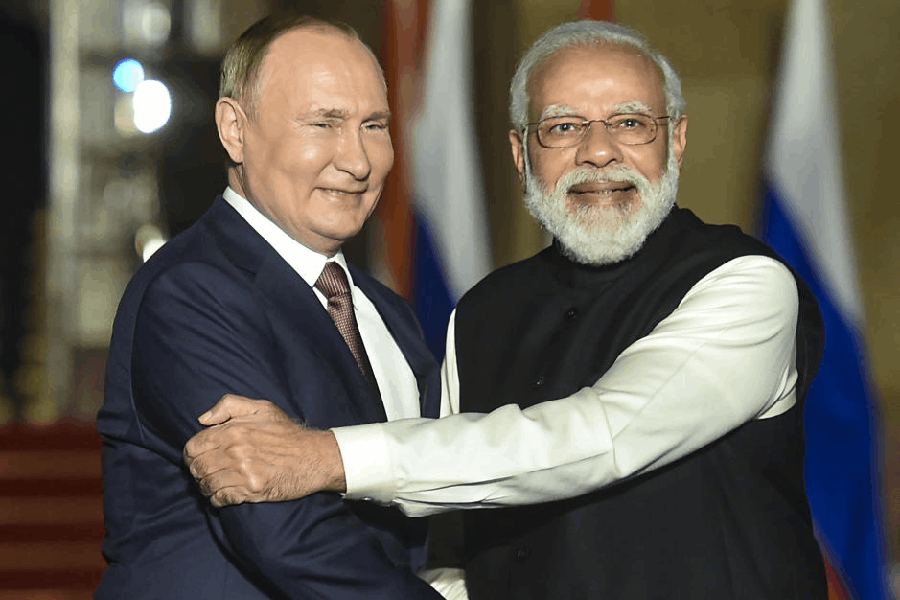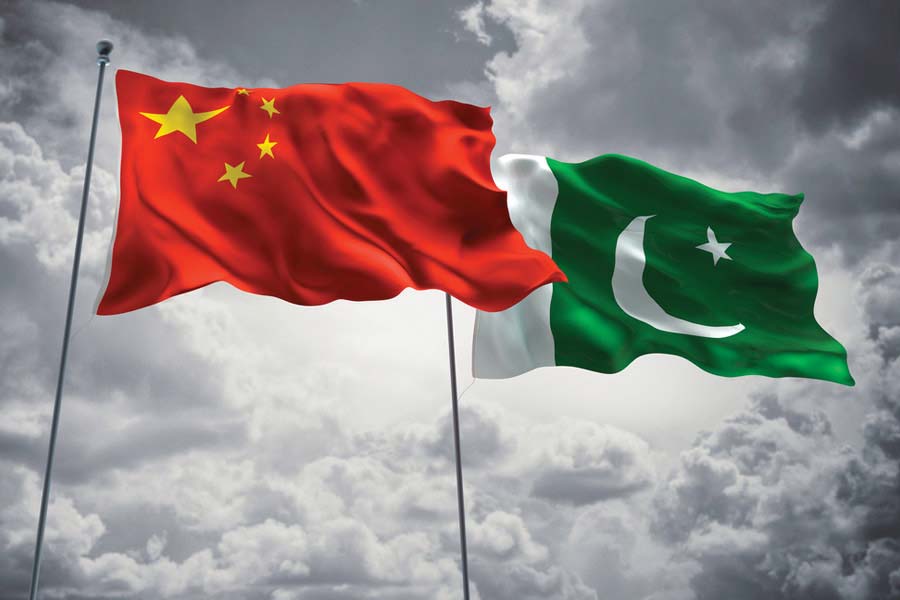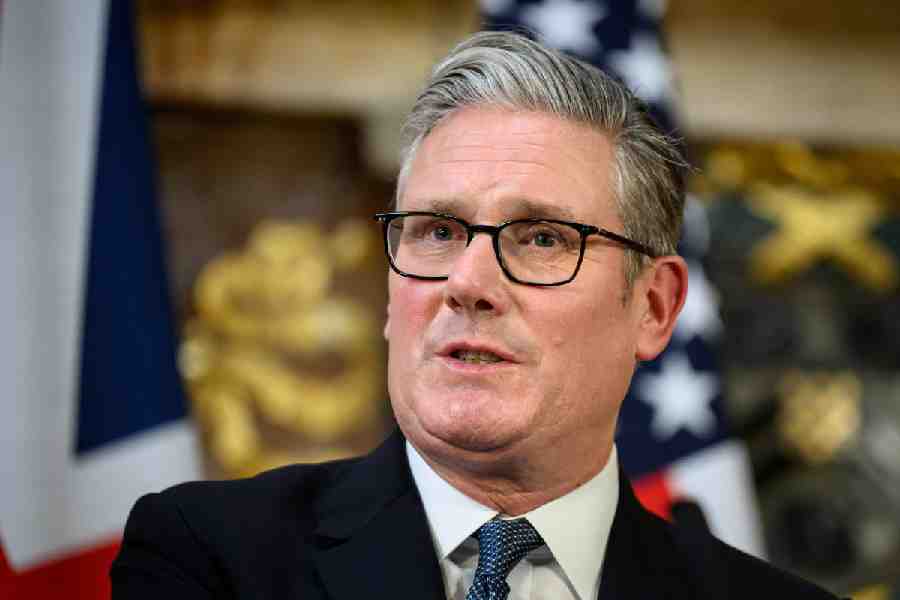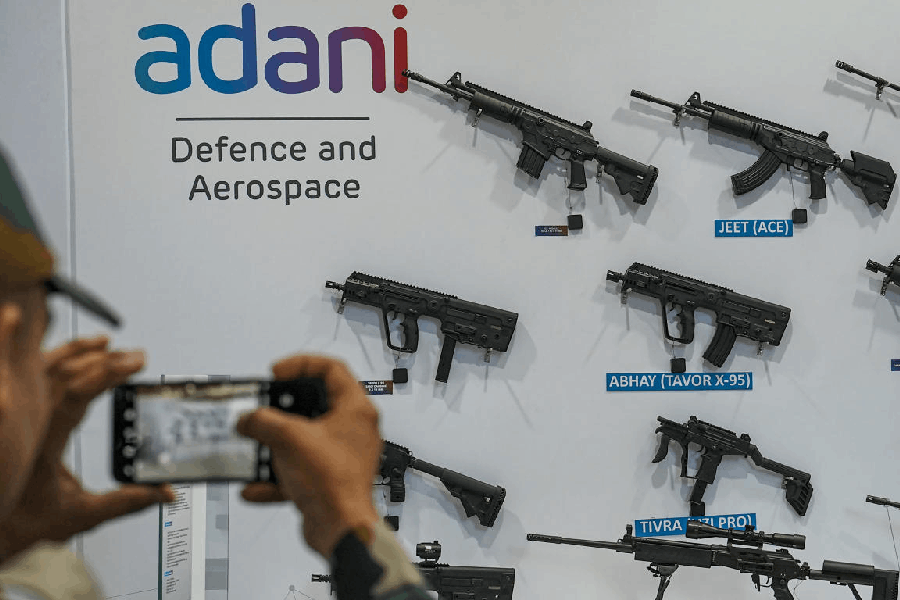 |
 |
The way to a man’s heart, they say, is through his stomach. Trust a politician to know. Joymalya Banerjee, executive chef of the restaurant chain Oh! Calcutta, says he had quite a task on his hands when the call came from 7 Race Course Road the other day. Prime Minister Manmohan Singh had invited Bengal chief minister Buddhadeb Bhattacharjee for dinner to his official residence in New Delhi on August 17. That was a tense week — the Left was threatening to withdraw support over the 123 Nuclear Deal, and the government had been pushed to the brink of collapse. Any interaction between warring leaders had to be treated with caution.
But being a master politician, the Prime Minister knew exactly what to do. Clearly, he had foreseen the effect a good helping of ilish machher paturi might have on the visiting Marxist babu. And so he had decided to call in the best people in the business of serving Bengali food to make Bhattacharjee feel as much at home in Singh’s house as he would in his Palm Avenue residence.
“The menu was largely decided by the Prime Minister’s men, since there was a protocol to be followed,” says Banerjee. “But we were free to throw in our suggestions.” So on D-Day, the dining table at Singh’s residence brimmed over with generous heaps of prawn cutlets, okra prepared with mango and mustard and a train of fish and meat, followed by desserts such as daaber sandesh. Bhattacharjee reportedly polished his platter, and Singh, despite being more of a vegetarian these days, mirthfully downed one fish too many. And a few days later, all seemed to be well in Parliament too.
While it would be unfair to say a single meal healed all wounds opened by the recent UPA-Left scuffle, one thing is clear. Politics and cuisine do make perfect bedfellows. And in the height of coalition politics, food — especially from India’s provinces, highlighting the importance of regional players in alliances — is slowly assuming a vital role in keeping state machinery ticking.
“Politicians have realised that food has the power to make friends out of enemies,” says Delhi-based food historian and consultant Gunjan Goela. “And by offering food from one’s own province, or treating guests to food from their provinces, one succeeds in striking a rather personal chord with one’s guests. It certainly paves the way for better talks,” she says.
Cut through the political rungs and the trend becomes all too evident. Bharatiya Janata Party (BJP) president Rajnath Singh carts edibles from his home state, Uttar Pradesh, and serves them to guests at his New Delhi residence. The banquets of science and technology minister Kapil Sibal often feature the best of chaats and kababs from famous eateries in Old Delhi, which is his constituency. Former Prime Minister Atal Behari Vajpayee, a self-professed foodie, was known to serve gulab jamuns and raj kachauris at cabinet committee meetings. And those who complained that the CPI(M) was too prosaic on the food front were proved wrong by Tripura chief minister Manik Sarkar, who flew in sacks of pineapples from his home state for his colleagues during a recent Politburo meeting.
The list goes on. Foreign minister Pranab Mukherjee makes it a point to serve shukto, aloo posto and prawn malai curry at receptions where Bengaliness needs highlighting. “When guests drop by at home after work, they are invariably offered muri (puffed rice) with black tea, the evening snack of the family,” says his son Abhijit Mukherjee.
And then there is Sachin Pilot, who has been carrying forth the tradition of the annual kisan lunches started by father Rajesh Pilot. He serves guests from the media a rustic fare comprising bajre ki roti, buttermilk and fresh vegetables. Clearly, a food festival is on in Delhi’s power corridors, and everyone seems to be chomping away.
Of course, much of this gastronomic overdrive can be attributed to the fact that Delhi, the political capital of India, is also striving to become the food capital of the country. But it’s a recent phenomenon. Former BJP president M. Venkaiah Naidu says he was appalled at the Delhiite’s tendency to order Continental or Punjabi food on every occasion when he first came to the city as party general secretary in 1993.
Indeed, things have changed since then — at the Centre, and on the streets. Just as a coalition government is by definition more open, New Delhi itself is becoming less insular, with quality eateries serving ethnic delicacies opening up in recent years. Chettinad, Malabari, Assamese, Rajasthani, Kashmiri — New Delhi has them all.
Calcutta’s Bijoli Grill, famous for its fish cutlets, has contributed to establishing Bengali food in the capital and along with Oh! Calcutta, finds considerable political patronage today. If the former is a regular supplier of food to the foreign minister’s residence, the latter finds favour with Lok Sabha speaker Somnath Chatterjee.
Nonetheless, there are some purists among politicians who think that nothing short of the real thing will do. Just as Oh! Calcutta got its celebrated chef from the eastern metro for the Prime Minister’s dinner, Venkaiah Naidu still flies in cooks from Andhra Pradesh when it comes to serving genuine Andhra food to the 200-odd guests that assemble for his annual lunch. “I started the party about 12 years ago to give politicians from other parts of India a taste of authentic Andhra cuisine,” says Naidu. The lunch comprises several classic Andhra dishes such as arsay (rice powder in jaggery) and putareku (a papery sweet) along with spicy prawns and fish. Naidu personally goes around explaining to diners the finer points of Andhra cuisine, and spice levels are never compromised on. “No one complains, though. They love the food despite the tears that flow,” says Naidu. “Except Advaniji. He strictly sticks to the sweets,” he laughs.
Others are even choosier. Like the BJP’s Mukhtar Abbas Naqvi, who dons the chef’s toque himself for his annual Id party, where he treats his guests to a traditional Rampuri daawat from his home province. “The feast helps get over political tension that brews among us through the year,” chuckles Naqvi. “The occasion is just a bahana.” But the food definitely isn’t.
And the inferences drawn at the end of a hearty political meal aren’t trivial either. For people do read between the grains to gauge whether food indeed goes all the way in binding politicians together. Sonia Gandhi, say those in the know, used to relish her hilsa at Somnath Chatterjee’s house and her deft manner of picking through the fish bones often gave the impression that thorny issues would get sorted out between the Congress and the CPI(M) as easily. And then there was former Tamil Nadu chief minister Jayalalithaa, who once called on former BJP president L.K. Advani at his residence with her entourage of AIADMK MPs during the days of the NDA government. In a gesture of solidarity, she asked for the non-meaty stuff that her host was sticking to.
Jaya’s choice of greens over reds left many of her MPs — who had heaped copious amounts of non-vegetarian fare on their plates — red in the face, and they promptly called the waiters and requested their platters to be swapped with leafy items. Which just goes to show that taste isn’t the only sense that rules at political meals. Talk of diplomacy over food.
Pix: Subhendu Chaki


